Case Analysis: Roads and Traffic Authority v Dederer (2007) HCA 42
VerifiedAdded on 2021/06/18
|10
|1017
|144
Case Study
AI Summary
This case study analyzes the Roads and Traffic Authority of NSW v Dederer (2007) HCA 42 case, where a 14-year-old boy was partially paralyzed after diving off a bridge. The case revolves around the issue of negligence and the Roads and Traffic Authority's (RTA) duty of care. The plaintiff argued that the RTA failed to maintain safety measures, while the defendant contended that they were not responsible for preventing the dangerous conduct of individuals. The High Court accepted the appeal, stating that the RTA did not have a duty to prevent dangerous conduct, even though the bridge design made diving easier and the RTA was aware that young people jumped off the bridge. The judgment analyzed the arguments from both parties, including the 'No Diving' sign, the lack of reported incidents, and the RTA's failure to conduct a risk management analysis. The analysis also highlights the court's strict interpretation of negligence and the plaintiff's argument about the RTA's failure to take appropriate action to prevent the injury of a minor. The conclusion critiques the High Court's decision, arguing that the court should have considered Mr. Dederer's age and the RTA's failure to enhance safety measures after recognizing the risk.
1 out of 10

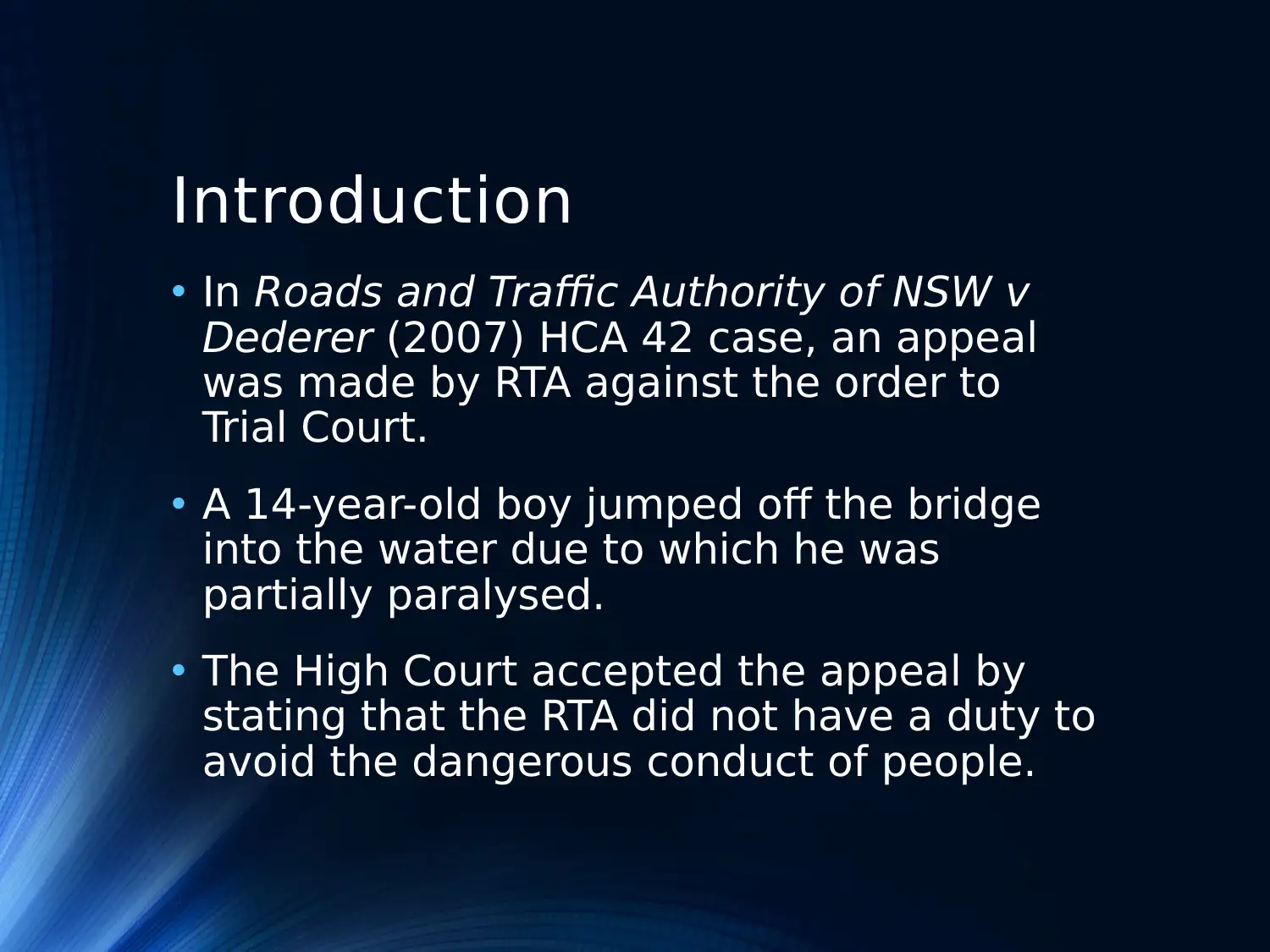
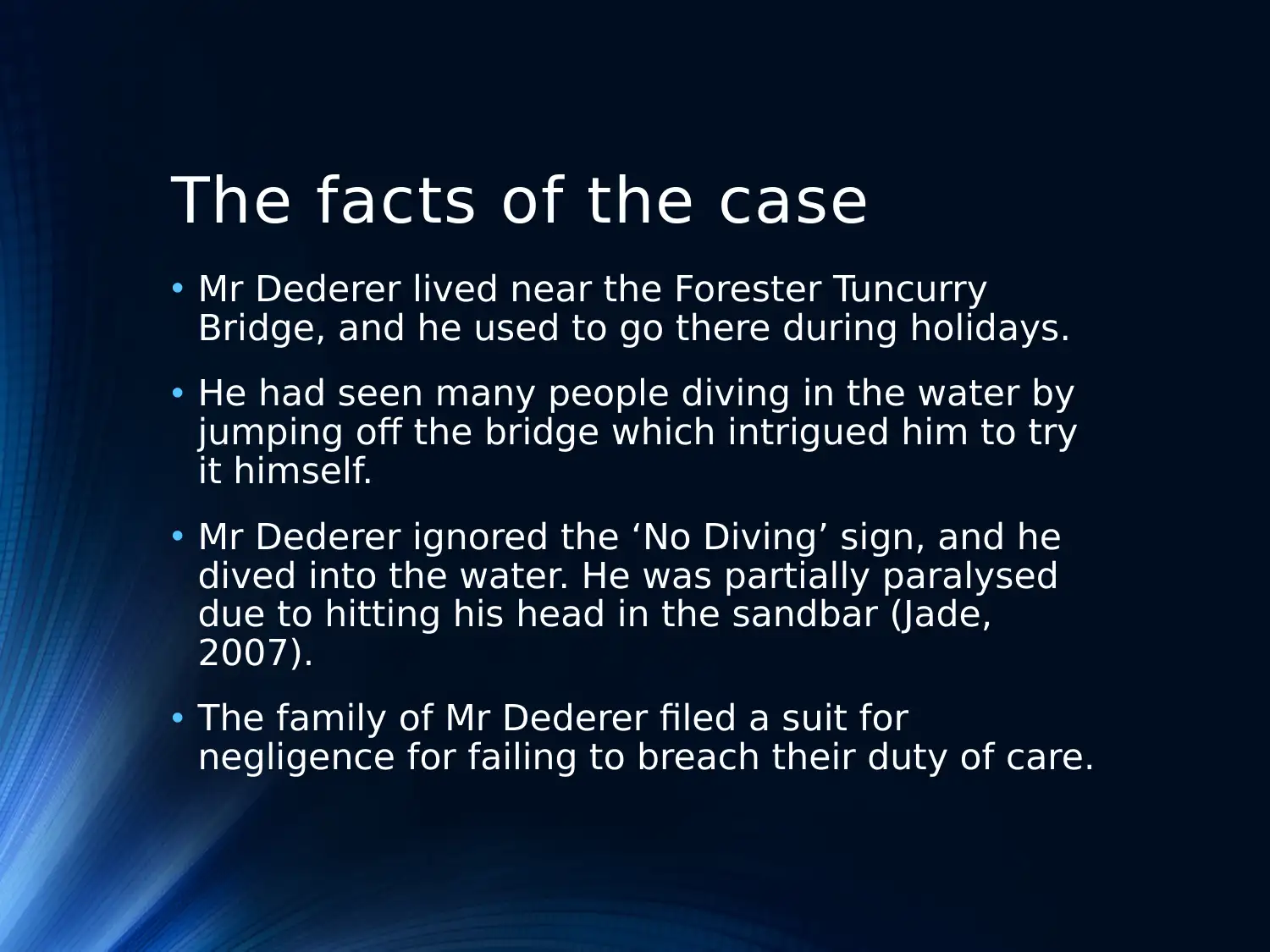

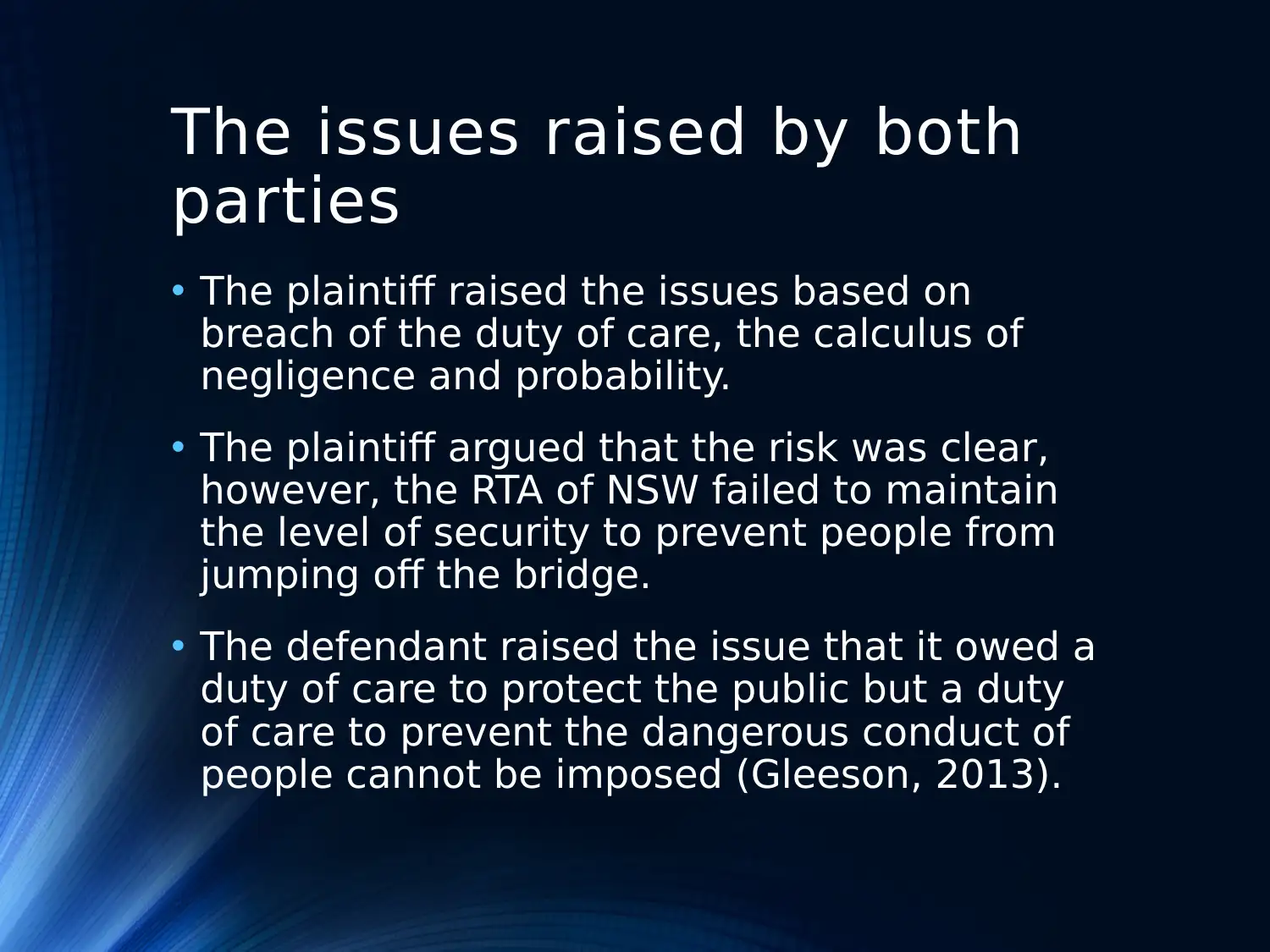
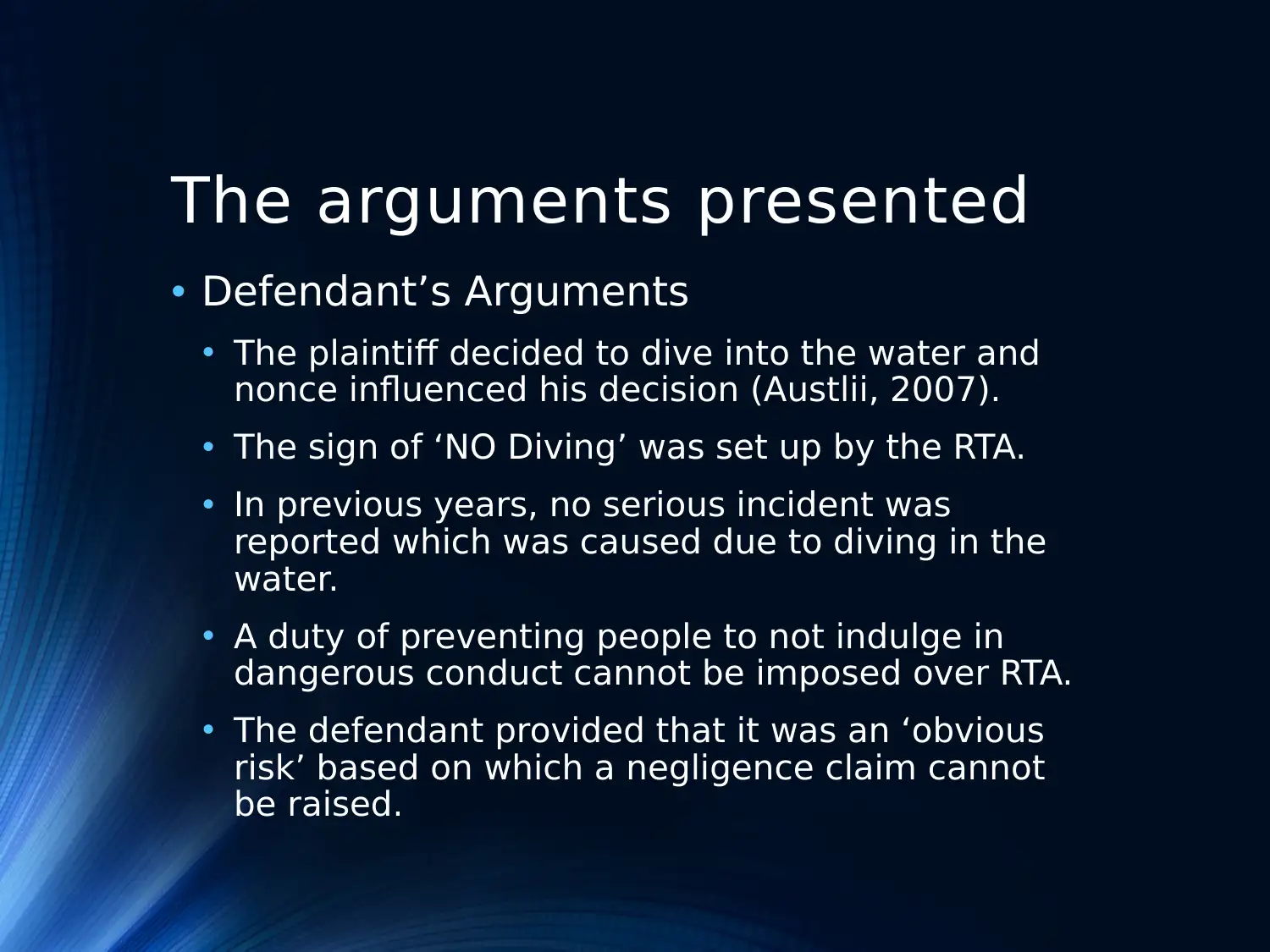
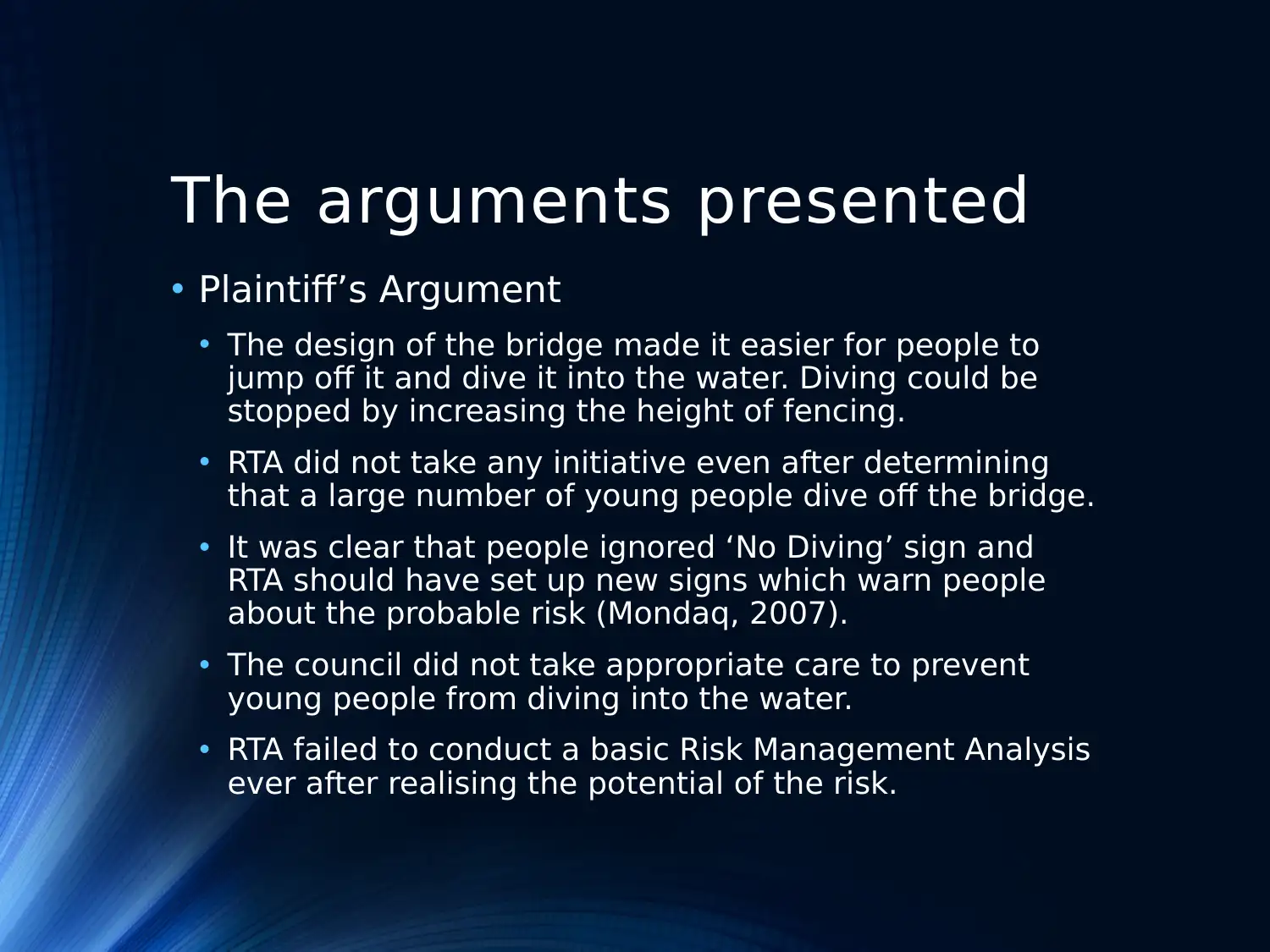
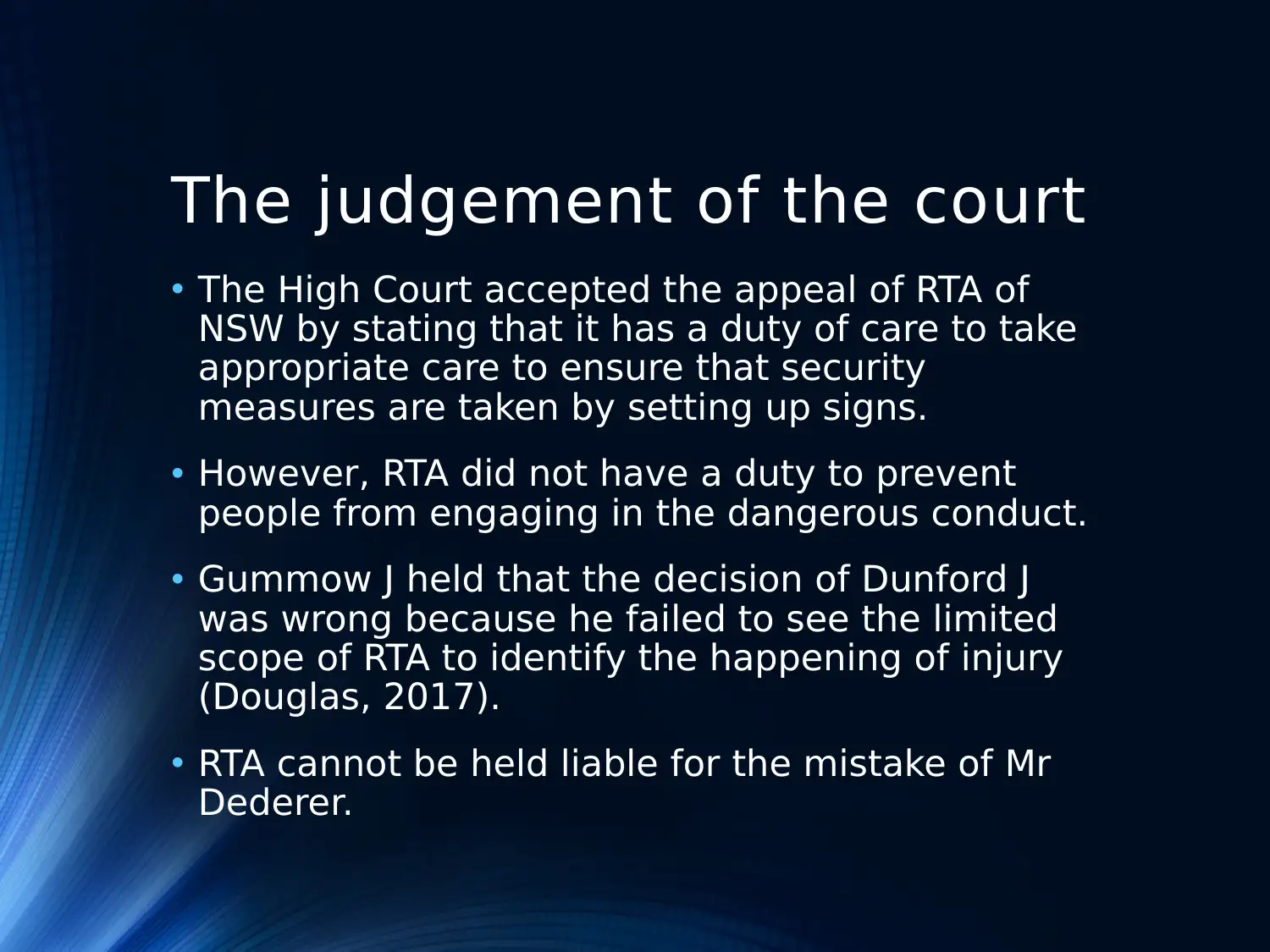
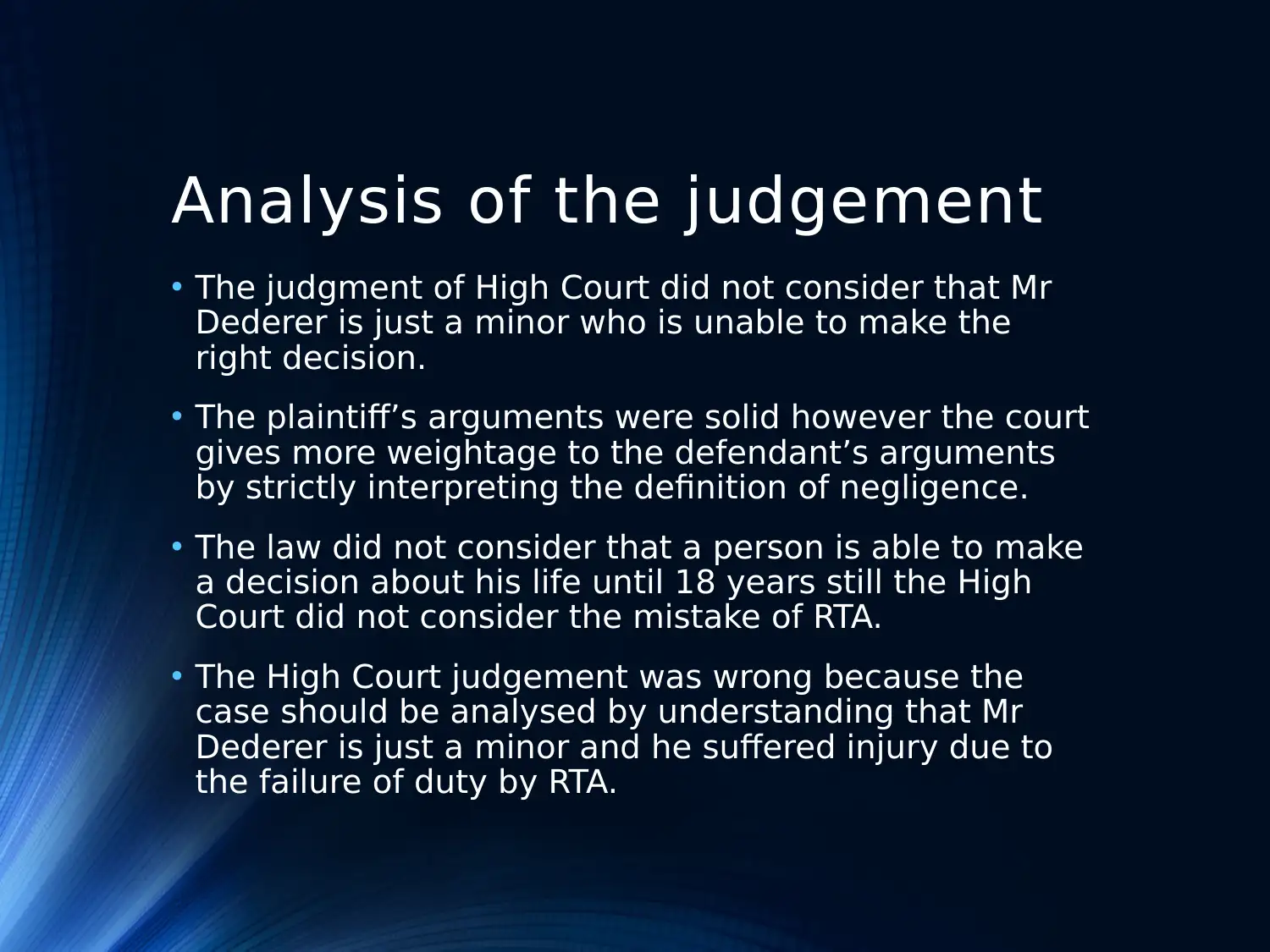

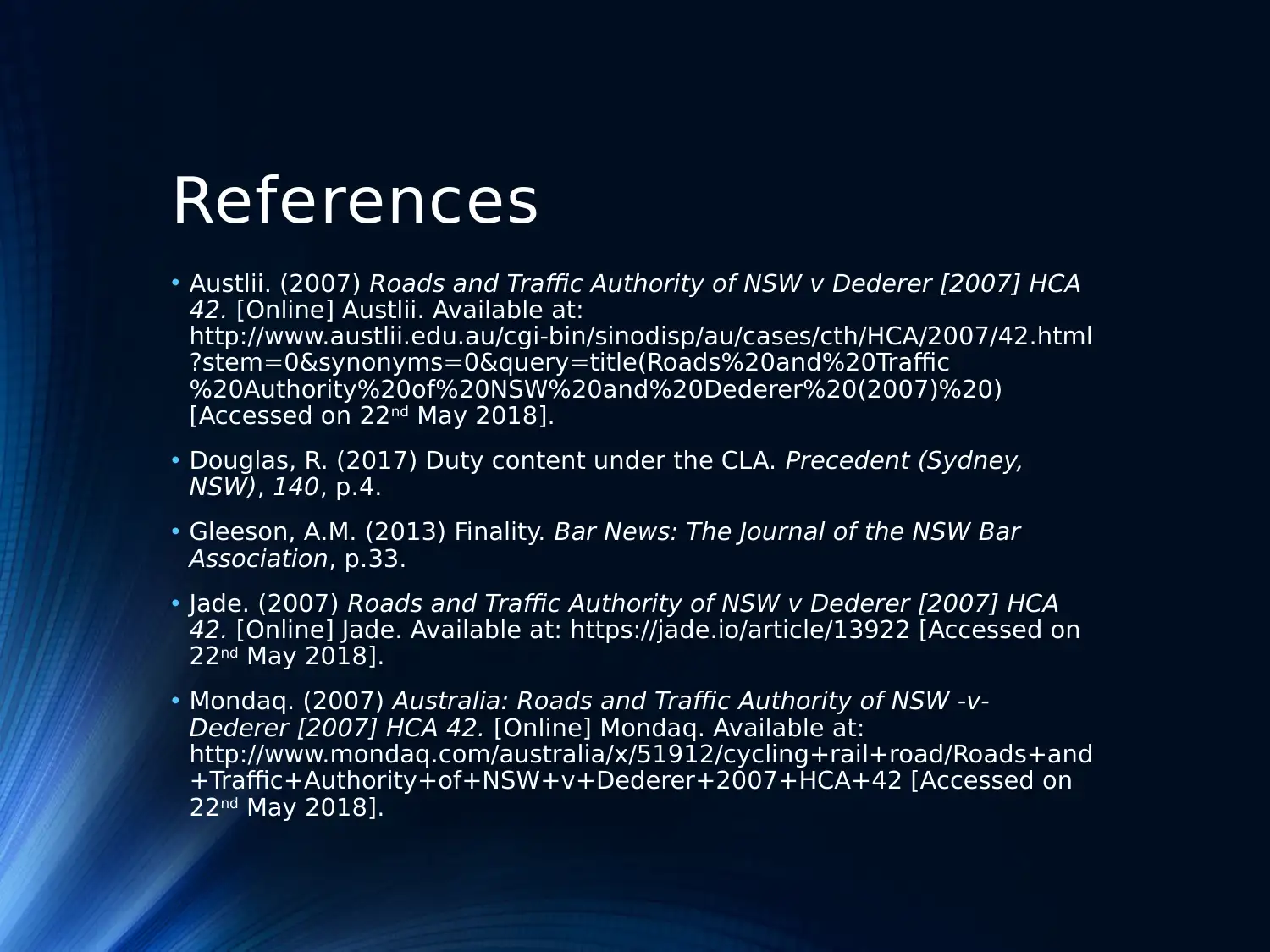


![[object Object]](/_next/static/media/star-bottom.7253800d.svg)